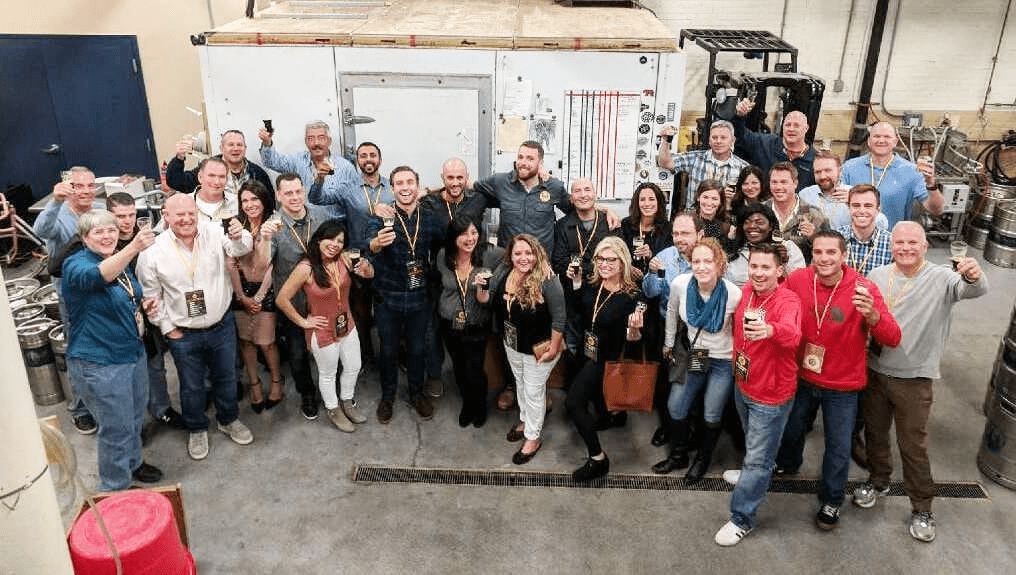American psychologist Bruce Tuckman said teams go through five stages in the team development process. What are the five stages of team development? Forming, storming, norming, performing, and adjourning. These stages track the progress from a team’s first meeting to the completion of their project. Each stage plays a vital role in developing a functioning team.
If you have watched a “buddy cop” film, you have seen this process play out before. What always happens? The boss assigns two cops to be partners. At first, they don’t get along. But over time, they learn to respect each other and work as a team. This newfound respect puts them in a strong position to bust the big and unlikely criminal at the end. Then, the movie is done.
Even if you haven’t watched a buddy cop movie, these steps will likely feel familiar to you. They are the narrative essence of the team development process. Each stage represents a pivotal moment in the development of any team, in movies, or at work. Knowing them will help you get the most benefits of team building.
The Five Stages
Forming
The forming stage is the first meeting of your team members. It’s a natural time for you to make introductions and describe the project. The forming is stage is also a rare moment to share relevant information, such as ground rules and the unique roles of team members. The perfect outcome? For team members to garner a sense of another, their leader, and the goals of the project.
Storming
As the team gets to work, they are likely to butt heads. Remember the buddy cop movie example? Those characters always have some clash of personality. This conflict is characteristic of the storming stage. During these moments, team members discover their differences in work styles, experience, and talents. It causes friction and discomfort. But, the storming stage is the trial that lets team members express their individualities and to see the need for group cohesion.
Norming
When that cohesion arrives, it is the norming stage. Here, the team members begin to work effectively as a unit. They begin to celebrate group successes. Productivity goes up, and the team settles into a comfortable groove. The keywords here are respect and communication.
One could also call this team building stage the “culturing” stage. At this time, the team solidifies the cultural foundations of its future successes. Look for culture forming in their communication patterns, their conflict resolution strategies, and the way they make decisions.
Performing
Eventually, the team becomes more than merely functional and cohesive; they become epic. The group begins working better than they ever anticipated on their particular project. Vibes are high, and the team is regularly achieving their goals.
Managers at this don’t have as much to do and tend to delegate most tasks. It’s a great time for leaders to begin taking stock of the team’s victories so far. How far has your team come?
Adjourning
Like all good things, your epic team must eventually move on. In the adjourning stage, your team wraps things up, disbands, and the individual members will transition to their next big adventure.
The adjourning stage is a natural time to hold a formal ceremony. Give a presentation highlighting your team members’ accomplishments. They’ve come a long way.
Team Building is Considered Part of the Forming Stage of Team Development
The forming stage is a lot like college orientation or the first day at the job. The team is getting introduced to one another, and everyone is polite and pleasant. Enthusiasm is high, and everyone is excited to be part of something new. For these reasons, the forming stage is naturally the place where a lot of team building happens.
(But it’s not the only place!)
During the forming stage, it’s common to talk about:
Team Member Skills and Backgrounds: This is an excellent time for everyone to describe who they are, what experience they have, and what some of their individual ambitions might be. Team members benefit from having a good idea of who they are working with.
Project Goals: You should describe the project from the outset. On the group level, it helps team members to know what sort of project they’re doing. Knowing this will help them anticipate what kind of role they’re likely to play.
Plus, having clearly defined goals makes it easier for workers to get in the zone later on. Clear goals will give them a guidepost to judge all their future action.
Timeline: All team members need to get a sense of timing. A clear schedule gives the same benefit as clear goals.
And a schedule is critical for managers and team leaders. With a sense of timing, you can better anticipate when each team development stage is likely to occur. This knowledge will help you make a smart plan.
Ground Rules: Simple rules keep things less chaotic. They will also help later on during the storming stage, where employees are likely to experience conflict. Savvy rules will help navigate these rough patches. They will also help you create a tone for your leadership style, which will help your employees later on.
Individual Roles: Establishing roles will help each team member understand where their responsibilities lie. It will help them get a sense of where they fit into the group. Also, when team members understand their unique part, they have a better idea for how they will individually benefit from the group. Roles make things personal. Knowledge of roles encourages team members to invest in the project and do their best work.
As these discussions take place, team members will get a robust sense of their role and responsibilities. They will also get a feeling for the most likely trajectory of the project.
Forming relationships is critical at this early stage, even though these relationships will change and experience challenges throughout the project. That’s why you should focus on people, not productivity, during the forming stage of team development.
Because the forming stage focuses on people, it’s a great time to schedule a team building activity. At this time, you’ll want an exercise that helps team members get to know each others’ strengths, challenges, and interests. The goal here is for each team member to get a robust sense and characterization of the people they are working with.
A healthy team building activity at this time will also let your team test the waters of working together before diving into a higher stakes project. By lowering the pressure, a fun team building activity will teach team members to understand each other, while avoiding many conflicts. In other words, a team building activity gives a safe, laboratory simulation of the rough, but rewarding, pathway ahead.
Start Team Building Now
Talent isn’t everything. Even if you pick all the best people, you are not guaranteed to get a dream squad. Consider any good basketball team. Could Michael Jordan have done it alone? Not at all. But with Dennis Rodman and Scottie Pippen, he helped create one of the most unstoppable forces basketball had ever seen.
Further, wishful thinking alone won’t make great teamwork happen. If it weren’t for Coach Phil Jackson’s visionary leadership, that unstoppable force might have never formed. You must be proactive and establish your team framework early in the process. Masterful teamwork does not happen naturally. A good team requires smart leadership and team building exercises to succeed. That’s why team building is so important.
Fortunately, because of the Tuckman model, you can now anticipate how the teamwork aspect of your project will play out. Things will begin easily in the forming stage, where you establish ground rules, make introductions, and set team goals (forming). After that, things will become tense, as team members learn to work together (storming). Eventually, your team members will overcome their differences (norming) and transform into all-star performers (performing). Then, you wrap things up (adjourning). With the Tuckman model, you can begin strategizing ways to navigate and address the complexities and challenges of your team’s development process.
The forming stage is a great time to get started with your team building. You can use this time to set healthy patterns into motion before problems arise later on. An early start also lets you establish ground rules and set the agenda in a fun, memorable way. Finally, it gives team members a chance to meet one another and develop some fun, initial rapport. If you begin your project with a focus on people and the team, you will set yourself up for the best results.
If you are interested in learning more about team development and the positive effects it can have on your outcomes, fill out our contact form. After you submit the form, we’ll give you a call and discuss your team development needs. We love geeking out about this stuff and would be delighted to speak with you. If one of our scavenger hunts sounds best for your needs, we’ll discuss your options and give you a competitive quote.




